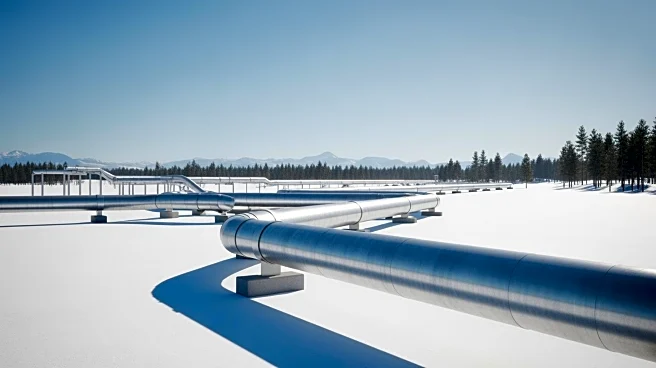What's Happening?
The Alaska LNG project, valued at $44 billion, is nearing a significant milestone with the expected completion of an engineering and cost study for an 800-mile pipeline by the end of the year. This project, a joint
venture between Glenfarne Group and Alaska Gasline Development Corporation, aims to transport natural gas from Alaska's North Slope to export facilities in south-central Alaska. The project has garnered interest from numerous energy companies and is supported by the Trump Administration, which has been advocating for increased LNG exports to Asian markets.
Why It's Important?
The Alaska LNG project represents a major investment in U.S. energy infrastructure, with potential implications for domestic energy supply and international trade. By facilitating LNG exports to Asia, the project could strengthen economic ties with U.S. allies and contribute to reducing the trade deficit. However, concerns about the project's cost and feasibility, given Alaska's challenging climate, remain. Successful completion of the pipeline study could attract further investment and commitment from international partners, bolstering the project's prospects.
What's Next?
As the pipeline study concludes, stakeholders will likely focus on securing additional investments and commitments from Asian companies. The project's progress will be closely monitored by industry observers and policymakers, given its potential impact on U.S. energy exports and trade relations. The outcome of these efforts could influence future energy projects and the strategic direction of U.S. energy policy.













